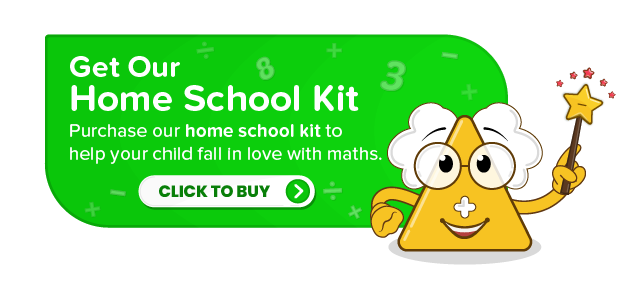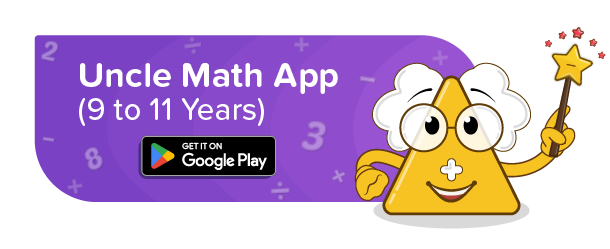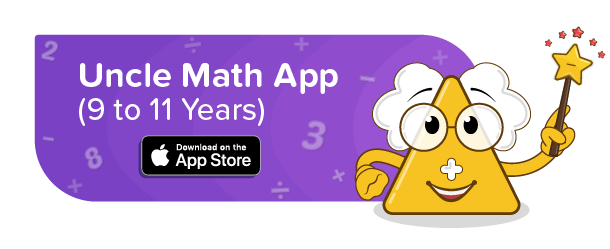/Title/Guide61_HighestCommonFactor-Title_v1.png)
The highest possible number that evenly divides given numbers is known as the Highest Common Factor (HCF) of two numbers. HCF is also termed as Greatest Common Divisor (GCD).
This teaching guide is aimed at explaining the idea of HCF to children in an entertaining and engaging manner. The activities and explanations offered here are appropriate for kids aged 9 to 11 years. Let’s get going!
The HCF of two numbers can be calculated in numerous ways. By using the prime factorization method, one can find the HCF of two or more numbers very quickly.
Highest Common Factor (HCF) - Listing Method
The listing method is a quick and easy method to find HCF. The following steps are used to find the Highest common factor of given numbers by the listing method :
- Write down all the possible factors for the given numbers.
- Compare the factors and pick out the common ones.
- Finally, pick the highest common factor.
- For example, HCF of 6 and 12
- Factors of 6 : 1, 2, 3, 6
- Factors of 12 : 1, 2, 3, 4, 6
- Common factors : 1, 2, 3, 6
- HCF of 6 and 12 is 6
Highest Common Factor (HCF) - Common Division Method
The common division method is used to find HCF for large numbers. HCF by Common division is calculated by following the steps :
- Divide the larger number by the smaller one.
- Now the remainder is taken as a divisor.
- The previous divisor is taken as a dividend.
- The division is continued like this until 0 is obtained as the remainder.
- The last divisor, which gives 0 as a remainder, is the required HCF.
- For example, the HCF of 18 and 30 is 6. As 6 is the last divisor, which results in the remainder being 0.
/Activities/Guide61_HighestCommonFactor-Example-1_v1.png)
Highest Common Factor (HCF) - Prime Factorization Method
Prime factorization is another method for determining the HCF of given numbers.
- Using the repeated division method, find the prime factors of the given numbers.
- Express the numbers in exponent form. Determine the product of only the prime factors with the lowest power.
- The HCF of the given numbers is the product of these factors with the lowest powers.
For example, HCF of 12 and 16 is calculated by the prime factorization method as shown below :
Listing prime factors of both numbers and expressing prime factors in exponent form :
12 = 2 x 2 x 3 = 22 x 31
16 = 2 x 2 x 2 x 2 = 24
Now finding the product of the prime factors with the smallest powers we get the HCF.
So the HCF of 12 and 16 will be :
HCF (12 and 16) = 2 x 2 = 4
Relation Between HCF And LCM
The product of given 2 natural numbers is always equivalent to the product of its LCM and HCF.
/Activities/Guide61_HighestCommonFactor-Example-2_v1.png)
Teaching HCF with kid-friendly, clear, and easy-to-understand posters from Uncle Math School by Fun2Do Labs :
Ignite kids’ curiosity with engaging stories for role play and skits, making the learning of this concept an exciting and effective experience. Teaching HCF through stories from Uncle Math School by Fun2Do Labs :
Learning HCF can be made enjoyable by incorporating interactive games and activities.
Eliminate the smallest!
This is one of the easiest activities to determine HCF in an engaging manner by using blocks. This activity is based on determining HCF by the common division method. As division means repeated subtraction, this activity focuses on the same. This activity can be carried out in the following steps :
- Take a sheet of paper and some blocks.
- Make two columns on the sheet of paper and write numbers on the top whose HCF is to be determined. For example, to find the HCF of 12 and 18, write 12 and 18 in each column.
- Put the same number of blocks in each column.
- Eliminate a smaller number of blocks from the larger number, and keep eliminating until the number of blocks is equal on both sides.
- Initially, there were 12 blocks on one side and 18 blocks on the other. Eliminating smaller number (12) from the larger number (18), so 18 – 12 = 6.
- Now, we have 12 in one column and 6 in the other, so by subtracting the smaller number 6 from the larger number 12, 12 – 6 = 6, we get 6 in both columns, which is the HCF of 12 and 18.
Help your kids practiseHCF with interesting and engaging fun worksheets and solutions from Uncle Math by Fun2Do Labs.





/Worksheets/Worksheet688_HCF_CCBy_v2.png)
/Worksheets/Solution688_HCF_CCBy_v2.png)
/Worksheets/Worksheet690_CommonDivisionMethod_CCBy_v2.png)
/Worksheets/Solution690_CommonDivisionMethod_CCBy_v2.png)
/Worksheets/Worksheet691_HCFAndLCM_CCBy_v2.png)
/Worksheets/Solution691_HCFAndLCM_CCBy_v2.png)
/Worksheets/Worksheet692_HCFAndLCM_CCBy_v2.png)
/Worksheets/Solution692_HCFAndLCM_CCBy_v2.png)
/Worksheets/Worksheet693_WordProblems_CCBy_v2.png)
/Worksheets/Solution693_WordProblems_CCBy_v2.png)
/Worksheets/Worksheet694_CommonDivisionMethod_CCBy_v2.png)
/Worksheets/Solution694_CommonDivisionMethod_CCBy_v2.png)